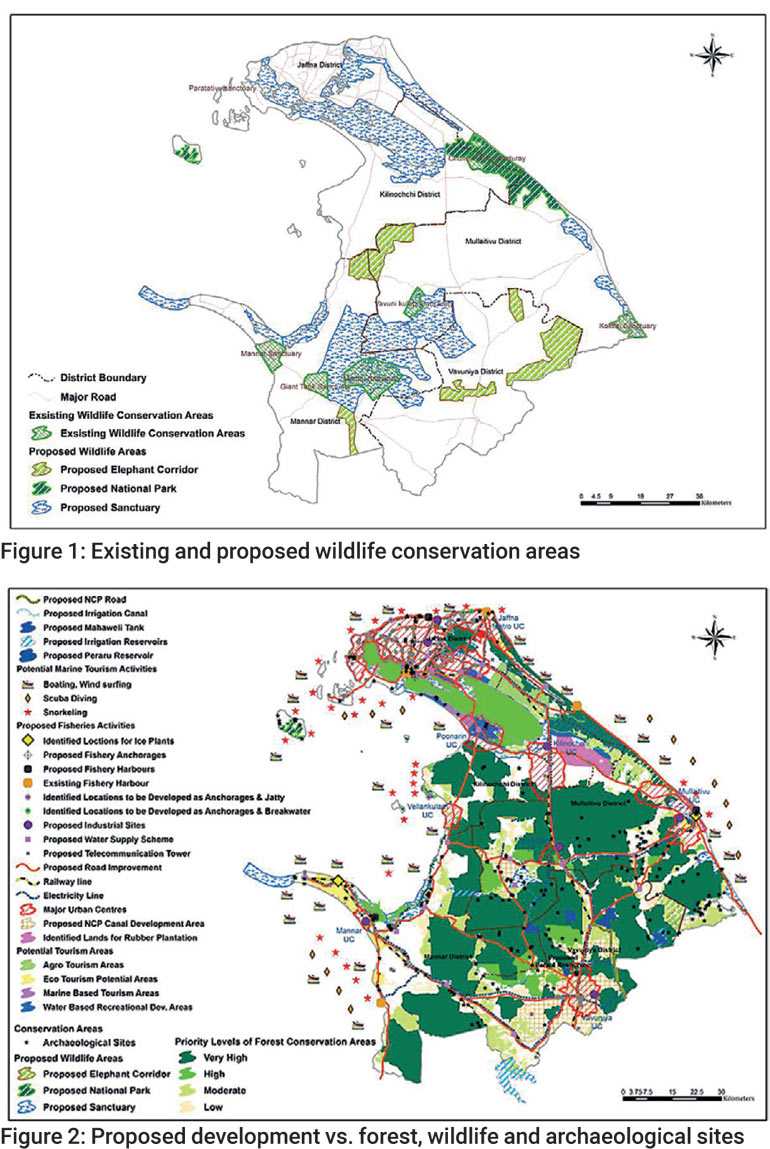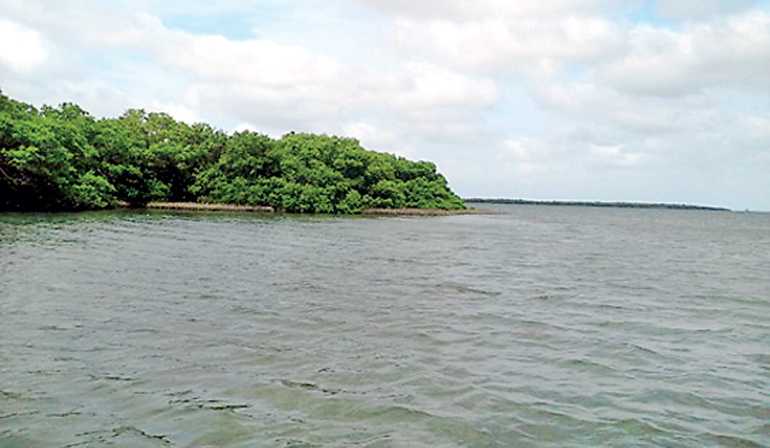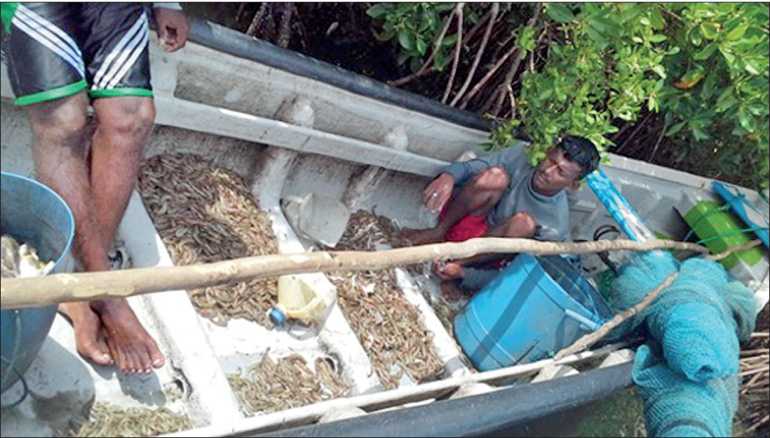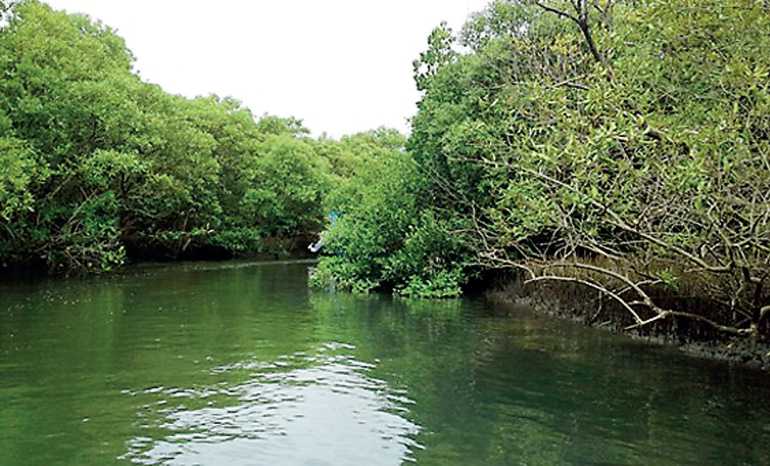Monday Feb 24, 2025
Monday Feb 24, 2025
Monday, 7 September 2020 00:36 - - {{hitsCtrl.values.hits}}

Wedithalathive Nature Reserve is an amazing complex of interconnected ecosystems that drives every activity there and beyond. It is made up of four main type of ecosystems: seagrass, mangrove, mud flats, and the salt marshes.
Each one of these ecosystems corresponds and speaks to the other. Mud flats and salt marshes absorb the salt that comes with the tide, and effectively block the salt entering inland, so that at the periphery of this reserve, towards inland, we have thriving agriculture consisting of coconut and paddy.
The salt marshes in this area are the natural depositors of sediments. Nutrient-rich sediment is thus retained within the country, protecting the Mannar area from erosion, and silently guarding the shoreline and protecting its fertile soil.
The heart of this nature reserve is the mangrove forest. It is one of the last remaining continuous mangrove stands in the country that to date has been providing the fullest services of a thriving ecosystem to people.
From the seaward, Wedithalathive mangroves have protected people living there against all the natural disasters, such as storms surges and tsunamis, etc. From landward, this is the sponge that absorbs storm water and prevents damage to houses and properties from floods.
The system therefore manages all the fluxes of sediment, water and salinity, and in turn has created a complex interdependent ecosystem engine, where different species can survive. It is this thriving assemblage of species that are harvested by people as shell and finfish.
When moving from salt marshes to mangroves and into coast, seagrasses can grow effectively because sediments have been trapped by the mangroves. It is in these seagrasses many fish and other marine organisms tend to breed and live, and seagrass itself is home to the rare dugong (Dugong dugon).
Beyond that point, the water is clear as many filters have conditioned it so that corals can thrive. This amazing harmony of ecosystems and the way they interact with each other is the secret for Wedithalathive to be recognised as one of the best landing sites of fish, shrimp and crabs. It is said that the flavour of harvest from this area is so unique and incomparable to any other area. This has been the main income for all the communities, not only in Wedithalathive, but also in the periphery. In fact, about 15% of the fisher population in Mannar are from Wedithalathive, and they earn a stable and decent income from this rich and complex ecosystem. This has been highlighted in the report produced by NARA too.
The world-renowned blue swimmer crab (Portunus pelagicus) captured at Wedithalathive brings foreign currency earnings and is therefore of significant economic value to the country. This nature reserve has many other reasons to qualify for its current status as a protected area. These rich ecosystems, particularly the mudflats, host many native and migratory birds on the Central Asian Flyway. Over one million birds have been recorded during a single sighting in Wedithalathive mudflats by the Ceylon Birds Club. This is the reason why close to 25 government agencies, together, decided to protect this area following a comprehensive Strategic Environment Assessment conducted for the Northern Province between 2009 and 2014 (Fig. 11 and Fig. 22). This assessment also identified other alternative areas that can be used for fisheries development and potential tourism opportunities for the Wedithalathive region.
Sri Lanka as a signatory to the RAMSAR convention, and the lead country for Commonwealth Blue Charter on Mangrove Ecosystems and Livelihoods, has an obligation to protect these rich ecosystems which are not only home to many species, but are thriving sources of incomes for communities involved in artisanal fishing and agriculture. If so, why should someone destroy this ecosystem complex to culture exotic shrimp, mud crab, tilapia and carp? Aren't there any alternative lands?
Why does this nature reserve continue to be productive? It is due to natural and healthy interconnections between the mangroves, salt marshes, mud flats and seagrass habitats of Wedithalathive. Let us protect the complexity and integrity of the Wedithalathive ecosystem and the positive impacts it has on communities around it.
1. Mallawatantri, A., Marambe, B., Skehan, C. (2014) Integrated strategic environmental assessment of the Northern Province of Sri Lanka, Final Report. Central Environmental Authority, Disaster Management Centre, Sri Lanka.
https://www.iucn.org/sites/dev/files/content/documents/2017/isea_north_final_report.pdf
2. Mallawatantri, A., Marambe, B., Skehan, C. (2014) Integrated strategic environmental assessment of the Northern Province of Sri Lanka, Final Report. Central Environmental Authority, Disaster Management Centre, Sri Lanka.
https://www.iucn.org/sites/dev/files/content/documents/2017/isea_north_final_report.pdf

Mangroves on the Vidattaltivu coast. Only area in Sri Lanka where mangroves face the sea

Catch from the natural environment. All of these may be lost when aquaculture farms are developed

Discover Kapruka, the leading online shopping platform in Sri Lanka, where you can conveniently send Gifts and Flowers to your loved ones for any event including Valentine ’s Day. Explore a wide range of popular Shopping Categories on Kapruka, including Toys, Groceries, Electronics, Birthday Cakes, Fruits, Chocolates, Flower Bouquets, Clothing, Watches, Lingerie, Gift Sets and Jewellery. Also if you’re interested in selling with Kapruka, Partner Central by Kapruka is the best solution to start with. Moreover, through Kapruka Global Shop, you can also enjoy the convenience of purchasing products from renowned platforms like Amazon and eBay and have them delivered to Sri Lanka.
Discover Kapruka, the leading online shopping platform in Sri Lanka, where you can conveniently send Gifts and Flowers to your loved ones for any event including Valentine ’s Day. Explore a wide range of popular Shopping Categories on Kapruka, including Toys, Groceries, Electronics, Birthday Cakes, Fruits, Chocolates, Flower Bouquets, Clothing, Watches, Lingerie, Gift Sets and Jewellery. Also if you’re interested in selling with Kapruka, Partner Central by Kapruka is the best solution to start with. Moreover, through Kapruka Global Shop, you can also enjoy the convenience of purchasing products from renowned platforms like Amazon and eBay and have them delivered to Sri Lanka.